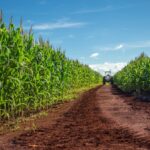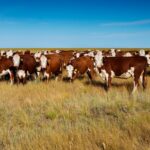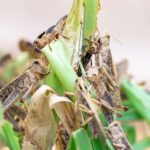Season extension techniques are essential for maximizing agricultural productivity in South Africa, where climate variability can impact crop yields. By utilizing various methods to extend the growing season, farmers can improve their harvests, diversify crops, and increase profitability. Here are ten effective season extension techniques that can be implemented in South Africa.
1. Using High Tunnels
High tunnels, or hoop houses, are unheated structures that create a controlled environment for crops. They can protect plants from harsh weather conditions, pests, and diseases while allowing for earlier planting and later harvesting. High tunnels are particularly effective for growing vegetables and fruits in cooler regions or during transitional seasons.
2. Row Covers
Row covers are lightweight fabrics that provide protection against frost, pests, and wind. They can be used to cover crops during early spring or late fall, creating a microclimate that promotes growth. Using row covers can help extend the growing season for sensitive crops like leafy greens and tender vegetables.
3. Cold Frames
Cold frames are simple structures made of transparent materials like glass or plastic that trap heat from the sun. These frames can be used to protect seedlings and young plants from cold temperatures, allowing for earlier planting in spring and extended growing into fall. They are particularly useful for starting seedlings or hardening off plants before transplanting.
4. Mulching
Applying organic or plastic mulch around plants helps regulate soil temperature and moisture levels, promoting healthier growth. Mulching can also suppress weeds, which compete with crops for nutrients and water. By using mulch, farmers can maintain soil warmth, allowing for extended growing periods.
5. Soil Improvement Practices
Improving soil health through practices like cover cropping, composting, and no-till farming enhances soil structure and fertility. Healthy soil retains moisture and nutrients more effectively, which can help extend the growing season. Soil improvement techniques can also reduce erosion and improve water retention.
6. Choose Early and Late Maturing Varieties
Selecting crop varieties that mature earlier or later than standard types can effectively extend the growing season. For example, farmers can plant early-maturing varieties in spring and late-maturing ones in fall to maximize harvest times. Research local varieties and choose those best suited for season extension.
7. Irrigation Systems
Implementing efficient irrigation systems, such as drip or overhead irrigation, ensures that crops receive adequate water throughout the growing season. Proper irrigation can help mitigate the effects of drought and extend the growing period, especially during dry spells. Additionally, using mulch can reduce water evaporation from the soil.
8. Heat-Tolerant Crops
Incorporating heat-tolerant crops into the growing schedule allows farmers to maximize productivity during warmer months. Varieties that thrive in higher temperatures can be planted later in the season, helping to extend harvests and ensure a continuous supply of fresh produce.
9. Intercropping
Intercropping involves growing two or more crops simultaneously on the same land. This technique can improve resource use efficiency and increase overall yields. By carefully selecting compatible crops, farmers can maximize space and extend the growing season through staggered harvests.
10. Vertical Gardening
Utilizing vertical gardening techniques can help maximize space, particularly in urban areas. By growing crops upwards on trellises or wall-mounted systems, farmers can extend the growing area while improving air circulation and light exposure. This technique is particularly effective for vining crops like tomatoes and cucumbers.
Implementing season extension techniques can significantly enhance agricultural productivity in South Africa, allowing farmers to adapt to climate variability and maximize their harvests. By employing methods such as high tunnels, row covers, soil improvement practices, and efficient irrigation systems, farmers can enjoy longer growing seasons and increased crop diversity. These techniques not only contribute to improved food security but also promote sustainable farming practices that can benefit both farmers and the environment.
Join 'Farmers Mag' WhatsApp Channel
Get the latest Farming news and tips delivered straight to your WhatsApp
CLICK HERE TO JOIN






